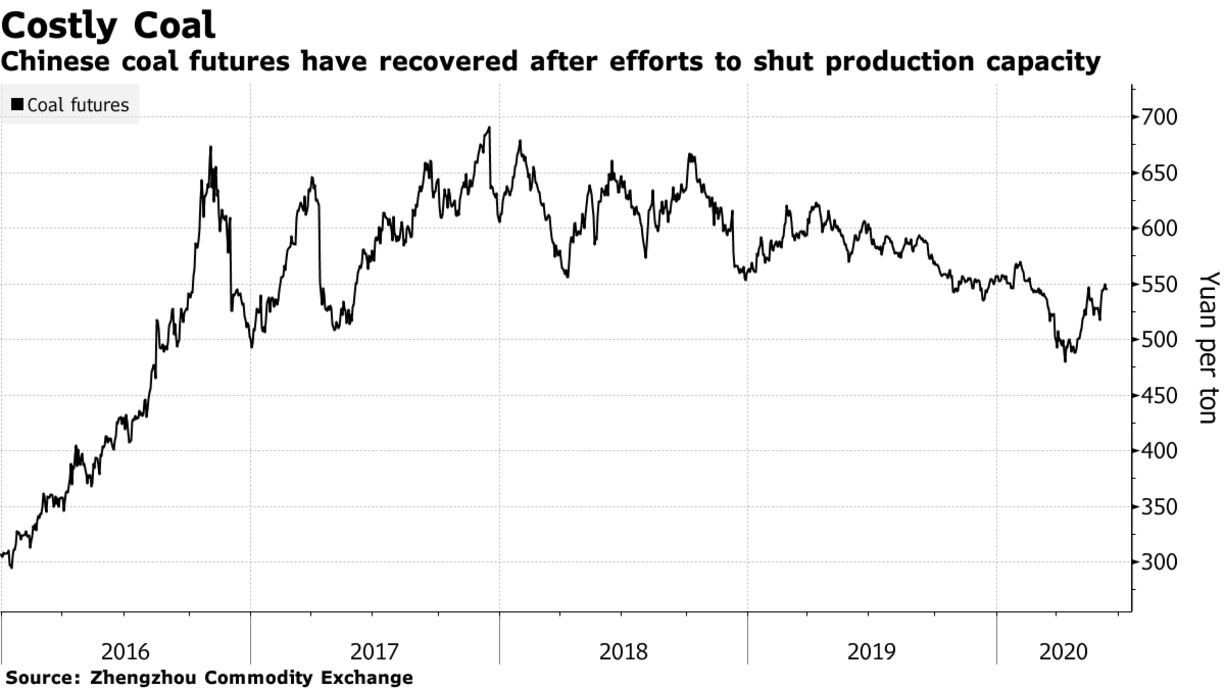China will likely ease the pressure on local governments to shut older, inefficient coal mines as it seeks to meet rising demand of the most-polluting fuel to spur its economic recovery. Government officials are in the midst of preparing the country’s all-important five-year-plan, the guiding document for policy and industrial development from 2021 to 2025. Unlike the previous edition, when China made a major push to cut overcapacity to support prices and help miners struggling with mounting debt, the government isn’t likely to set any targets for mine closures, analysts forecast.
The country in 2016 set a target of shutting 800 million tons of annual capacity, with reductions met two years earlier than planned. To be sure, those mines would essentially be replaced by “advanced” capacity, a term Beijing uses to refer to larger, safer and more-efficient operations.
“We expect the government to continue to manage production capacity,” said Zhai Yu, a senior consultant with Wood Mackenzie Ltd. “But maybe not continue to cut capacity, as we forecast demand increasing in the next five years.”
Analysts at Wood Mackenzie, Daiwa Capital Markets and China Coal Resource are among those who don’t believe China will set a target for closing outdated coal mine capacity in its 14th Five-Year Plan, which will officially be adopted next year. Thermal coal for September delivery closed at 538 yuan a ton on the Zhengzhou Commodity Exchange on Tuesday, holding at the lowest level in more than a week.

Total coal production capacity may rise to 5 billion tons a year by 2025, from 4.1 billion currently, according to Daiwa. That will help the country meet demand growth expected from its power sector. China’s thermal coal use will increase and peak in 2026 at about 4.9 billion tons a year, some 11% higher than the current level, Wood Mackenzie’s Zhai said.
